Milan, Italy Trams
![]()
Milan's Messina Depot, truly a Cathedral of Traction. Photo by Peter Ehrlich.
Overview
Milan, Italy is the financial and fashion capital of Italy, located in the base of the Lombardy region of Northern Italy. Some 1.5 million people reside within the "Comune" limits, with another million or two nestled in the suburbs. It is a bustling metropolis laced with narrow streets in the Centro Storico, as well as many wide tree-lined boulevards, or "Viali." Most of the buildings are of massive masonry construction, giving the city the impression that it means business. This same sense of purpose sometimes leaves visitors with the impression that Milan is a cold, uninspiring city, compared to others in Italy such as Florence, Rome and especially Venice. Yet there are many architectural and pastoral gems scattered around the entire city, starting with the Duomo and Galleria Vittorio Emanuele, both located in the physical and spiritual center of the city, Piazza Duomo. Nearby is the world-famous La Scala Opera House. Milan, indeed, is a great walking city. Many Centro Storico streets have been made off-limits to private automobiles.
Milan is also blessed with one of the largest and most interesting tramway systems in Europe. The first horsecars began running in 1862 and electrification was introduced in 1893. The tramway network reached its peak in 1940, with 310 km of trackage. Despite retrenchment and "Metropolitana" construction, there are still 168 kilometers of tramway today. There are 17 separate tram lines, linking every part of the city, on which operate five varieties of trams, ranging from the 1928-built, American-style "Ventotto", or "Peter Witts," to the newest vehicles, the "Eurotram" and the "Sirio". Most numerous are the Peter Witts. 175 of these sturdy trams still operate every day on the streets of Milan, out of 250 rebuilt between 1988 and 1992, and from an original fleet of 502. Then come the 33 6-axle trams numbered 4601-4613 and 4714-4733, built between 1955 and 1960 by Stanga and Breda. In 1970, the Azienda Trasporti Municipale (Milano) designed its first 8-axle "Jumbotram", number 4801, using carbodies of the 5200s and 5300s with a homebuilt center section. By 1976, some 44 of these had been constructed and were placed in service initially on Milan's heaviest service, Line 15, which extended into south Milan, and then to others. Another 100 brand-new 8-axle "Jumbotrams" numbered 4900-4999, built by Fiat and Stanga, were received in 1976/77. In 2000, ATM (now renamed Azienda Trasporti Milanesi) placed in service the first of 26 ADTranz low-floor "Eurotrams", which were initially assigned exclusively to Line 14. ATM has an order for 93 "Sirio" low-floor trams with Ansaldo-Breda, 58 being 8-axle units and 35 6-axle cars, to be numbered in the 7100-series and 7500-series, respectively. These will be used on a series of new interurban routes and to phase out the 4800s and some Peter Witts. Delivery and testing begain in 2002.
Milan's tramways run on city streets and on a lot of side-of-the-road private right of way. In some cases, such as along Viale Fulvio Testi/Viale Zara (Lines 5/7/31), routes run on either side of a motorway.
The future looks good for Milan's tramway system. Two new "Metrotramvia" are under construction, one of which is along an existing line. New cars are coming. And ATM plans to rebuild up to 60 "Peter Witts"--the oldest streetcars in Europe still in regular
service--for 10 more years of service.
December 2002 Updates
Beginning in December, 2002, the first addition to Milan's tramway system was opened with the introduction of Line 7--Largo E. Mattei--Piazza Lagosta. This was a new service which featured Milan's newest trams--the ultra-long Eurotrams and Sirio. It connected with the Metropolitana at Zara M3 and ran via Lines 11 and 2 (with Line 4 as far as Ca' Granda) to the new Bicocca University, a college specializing in the applied sciences. After passing through the campus, it skirted the Italian Railways line to Bergamo and then ducked under the tracks, ending at Largo E. Mattei. This was a forerunner of major changes to come the following year.
During 2003 the eastern crescent of Circular Lines 29/30 was closed for major roadway and trackway rebuilding--a project that was completed by the end of 2004. This affected not only lines 29/30, but also Line 9 (which was replaced with articulated buses for the duration) and Line 23, which used the eastern crescent. Line 23 became a shuttle from Lambrate to Repubblica with a long terminal loop via Repubblica and eastward past Stazione Centrale. Lines 29/30 terminated at Porta Genova in the south and Piazza IV. Novembre (Centrale) in the north.
Beginning December 8, 2003, both the new Metrotramvia Nord and Metrotramvia Sud opened for service. This resulted in changes to lines 2, 4, 5, 7, 15 and 24, with a new Line 16 created to take the place of the western end of Line 24 and the southeastern portion of Line 4. A major equipment shuffle between depots (depositi) occurred as a result.
Metrotramvia Nord is the section formerly operated by the Désio interurban between Via Valtellina along Via Farini to Parco Nord (Niguarda District)--the city limits. Lines 4 and 5 operate this service, and the interurban connects at Parco Nord.
Metrotramvia Sud is a new route for Line 15 built to the east of, and paralleling, Line 3 between Ticinese and Abbiategrasso.
January 2009 Updates
In January, 2009, ATM opened its newest tram route, Line 31, which runs from Piazza Lagosta to the suburb of Cinisello, using existing trackage on Viale Zara and Via Fulvio Testi to Bignami, and brand-new trackage into Cinisello. The route skirts the east side of Parco Nord (which, on the west side, is served by existing Lines 4 and 5 and the Désio Interurban). As a result, line 11, and short shuttle line 5/slash, were abandoned, and Line 7 was modified. This has resulted in Sirio running in service on streets such as Proccachini, Sempione and Espinasse for the first time ever. Also, 6-axle trams have returned to circular line 29/30 for the first tine since late 2002, and share duties with 4900-series Jumbotrams on Line 27.
In addition, continued construction of Metropolitana Line M5 in the vicinity of Stazione Porta Garibaldi, has affected Lines 29/30 and 33. Rebuilding of the west Lambrate loop in northeast Milan has resulted in terminal changes for routes 23 and 33, with 33 now terminating at Sire Raul, utilizing tram trackage past Deposito Leoncavallo that hasn't seen a revenue tram in nearly 20 years.
With the route changes and the introduction of 7600-series Short Sirio (Sirietto) into service, the days of the 4800-series homebuilt Jumbotrams are numbered, with only 20 cars in service in March 2009.
The Peter Witt situation, however, is much rosier. Beginning in late 2007, about 50 "Ventotto" have been, or slated to be, repainted in historic 1928 yellow and white livery. In addition, 17 or more Witts that have long been in storage at Famagosta subway yard, will be rebuilt and returned to service. This list includes car 1908, which is the former second prototype "Ventotto" 1502. This is great news for the oldest regularly-active fleet in Europe, which as recently as 3 years ago was condemned to be phased out on every route except Line 19. The Peter Witts are indeed the Energizer Bunny of streetcars– they keep going and going!
Improvements have also been made to the last 50 of the 4900-series Jumbotrams, which riders in the hot and muggy Milanese summers will certainly appreciate: Air conditioning has been added to cars 4950-4999.
Summary:
Line 1: No change. Peter Witts.
Line 2: No change. Peter Witts and occasional 6-axle trams.
Line 3: No change. Short Sirio and Jumbotrams.
Line 4: No change. Long Sirio.
Line 5: No change. Peter Witts and 6-axle trams.
Line 5/Slash: Discontinued.
Line 7: Operates between Precotto and Caccitori d'Alpi (old Line 33 terminal). Short Sirio and 4800-series Jumbotrams, although 6-axle trams and even Peter Witts have occasionally been spotted on this line.
Line 9: Operates between Pza. IV. Novembre (Stazione Centrale) and Porta Genova. Peter Witts and 6-axle trams. (Until January 2009, Jumbotrams and Short Sirio were also assigned.
Line 11: Discontinued. Until January 2009, this route operated between Bignami and Caccitori d'Alpi (old Line 33 terminal).
Line 12: No change. Jumbotrams.
Line 14: No change. Short Sirio and Jumbotrams.
Line 15: No change. Eurotrams and 4900-series Jumbotrams.
Line 16: No change. 6-axle trams and 4900-series Jumbotrams.
Line 19: No change. Peter Witts.
Line 20: This tourist route was discontinued in 2007.
Line 23: Operates to Lambrate east loop because of reconstruction of the west loop. Peter Witts.
Line 24: No change. 4900-series Jumbotrams.
Line 27: No change except for equipment used. 4900-series Jumbotrams and 6-axle trams.
Line 29/30 (Circular). Because of the construction at Staz. Garibaldi, this line operates only between Deposito Messina and Pza. IV. Novembre (Staz. Centrale), with buses bridging the gap. Peter Witts and 6-axle trams (these return to this route for the first time since the 2002 changes).
Line 31: New route between Piazza Logosta and Cinisello, replacing Line 11 on Zara and Fulvio Testi. Long Sirio.
Line 33: Because of the construction at Staz. Garibaldi, and the reconstruction of the west Lambrate loop, this line now operates from the east Lambrate loop via Piazza della Repubblica (old Line 11), and to the Sire Raul loop past Deposito Leoncavallo, on previous non-revenue trackage. The route to Caccitori d'Alpi, which was temporarily covered by Line 11, is now served by Line 7.
January 2011 Updates
Well, with the downturn in the world economy and a number of high-profile accidents over the last couple of years, all of a sudden, things are not as rosy in the Milan tram world any more.
There have been a few service cuts, route consolidations and diversions due to subway and other construction. The major changes have been to lines 2, 3, 7, 16, 19, 29/30 and 33. In addition, the long Sirio and Eurotrams have been barred from operating in the Centro with trams from other routes because of their length. And one can no longer ride a tram out to Cacciatori d'Alpi (the old 33 Line terminal), nor on the portion of Line 19 between P.za 6 Febbraio and Sempione, nor on Via Proccacini (used by loop line 29/30 and 7). Further, there is only one line serving Via Manzoni, Milano's premier fashion store street--Line 1. At least, there are still Peter Witts there! But you won't see a Witt passing the Duomo any more.
The Peter Witt situation, considerably brighter in 2009, has dimmed drastically in 2011. There are only about 90 scheduled cars, with another 60 stored, but still technically active. Witts are now found only on Lines 1, 5, 19, 23 and 33. Reportedly, they also take over night service on Line 12.
In addition, all of the 4800-series homebuilt Jumbotrams have been withdrawn from service. On the other hand, all of the 4600/4700 series 6-axle trams have been repainted yellow and white, as have all of the 7500/7600 series Sirio (called Sirietto).
Summary:
Line 1: No change. Peter Witts.
Line 2: Major change. The south end from Negrelli to Cordusio remains the same, but the north end has taken over the service to P.za Bausan formerly operated by Line 3. 6-axle trams.
Line 3: Major change. Line now runs from Gratosoglio to Duomo only, terminating at the former Line 19 Cantu loop. Jumbotrams.
Line 4: No change. Long Sirio.
Line 5: No change. Peter Witts and occasional 6-axle trams.
Line 7: Operates between Precotto and Cimitero Monumentale only, and Line 7 trams loop through Deposito Messina. Short Sirio.
Line 9: Operates between P.za. IV. Novembre (Stazione Centrale) and Porta Genova. Short Sirio.
Line 12: No change. Jumbotrams. May use Peter Witts at night.
Line 14: No change. Short Sirio.
Line 15: No change. Eurotrams and Jumbotrams.
Line 16: Minor change. Because of construction of subway line M5, Line 16 no longer operates to the giant Meazza soccer stadium at San Siro, but is looped at P.za Segesta. a short distance from there. Jumbotrams.
Line 19: Major change. Line now operates from Porta Genova to Roserio vie the old 29/30 and 1 instead, past Arco di Pace on Corso Sempione. Peter Witts.
Line 23: Returned to Lambrate west loop. Peter Witts.
Line 24: No change. Jumbotrams.
Line 27: No change. Jumbotrams and occasional 6-axle trams.
Line 29/30 (Circular). Discontinued.
Line 31: No change. Long Sirio.
Line 33: Now operates between Lunigiana (north of Staz. Centrale, the previous Line 2 terminal) and Lambrate east loop. The original line west to Cacciatori d'Alpi has been discontinued, although for a while, Cacciatori was operated by Line 7. Peter Witts.
Depots (Depositi) and basic line assignments
Many route assignments are divided between depositi.
Baggio. 4900s and 2/3 of the 6-axle tram fleet, plus a small number of Peter Witts, and the entire special/historic fleet. Assignments: Lines 3, 7, 9, 12, 16 and 24.
Leoncavallo. 4900s, 6-axle trams and Peter Witts. Assignments: Lines 1, 2, 5, 11, 23, 24, 27, 33.
Messina (the Cathedral of Traction). 4800s, Long and Short Sirio and Peter Witts. Assignments: Lines 1, 3, 4, 5/slash, 9, 12, 14, 19, 29/30, 33.
Ticinese. 4900s, Peter Witts, Eurotrams. Assignments: Lines 2, 3, 12, 14, 15.
Precotto (opened 2007). Long Sirio. Assignments: Lines 4 and 7.
Historic Car 609
Car 609 was originally work car 700, built in the 1930s. It was restored by ATM to represent the large fleet of "Edison" 2-axle trams which were the backbone of Milan's tramway fleet until the advent of the Peter Witts in 1928/29.
Peter Witt Cars, April 2005
(Notes: #=Stored out of service at Famagosta depot, R=Retired for historic fleet; @=Accident damage; ST=Special Tram).
1503ST, 1504, 1511, 1521, 1526, 1527, 1530, 1531, 1533, 1539, 1541, 1544, 1545, 1552, 1561, 1564, 1565, 1566, 1568, 1569, 1579, 1580, 1582, 1585, 1589, 1590, 1591, 1592, 1596, 1597, 1600, 1602, 1605, 1609, 1611, 1613, 1623, 1625, 1626, 1630, 1631, 1634, 1635, 1636, 1641, 1646#, 1648, 1650, 1652, 1656, 1658, 1661, 1662, 1665, 1670, 1671, 1673, 1677, 1686, 1687, 1688, 1689, 1694#, 1699ST, 1702ST, 1703, 1704, 1708, 1714, 1719, 1723ST, 1724#, 1725, 1726, 1730, 1732, 1736, 1737, 1738, 1744, 1745, 1746, 1747, 1749, 1754, 1756, 1757, 1759#, 1771, 1773, 1782, 1784, 1785, 1787, 1788, 1789, 1794, 1798, 1799, 1800, 1802, 1803, 1804#, 1809, 1812#, 1813, 1819, 1821, 1822, 1825, 1826#, 1827, 1830, 1833, 1835, 1836, 1841, 1842, 1843, 1846, 1847ST, 1849, 1851, 1852, 1853, 1854#, 1855#, 1857, 1858, 1860, 1861, 1862, 1863, 1866, 1867#, 1870, 1872, 1874, 1877, 1878, 1879, 1880, 1881, 1883, 1886, 1890, 1892, 1893, 1895, 1897, 1898, 1899, 1901, 1902, 1908R, 1915#, 1916, 1917, 1920, 1921, 1922, 1923, 1924, 1926, 1929, 1930@, 1931, 1935, 1936, 1940, 1944, 1948, 1949, 1950, 1951, 1954, 1956, 1957ST, 1960, 1963, 1966, 1968, 1970, 1974, 1976, 1978, 1980, 1982, 1984, 1986#, 1989, 1990, 1993, 1994, 1997@, 1999, 2000, 2002.
Peter Witt Cars Preserved Elsewhere (Incomplete)
San Francisco MUNI: 1507, 1515, 1556, 1588, 1793, 1795, 1814, 1818, 1834, 1859, 1911.
Midwest Threshers Museum, Mt. Pleasant, Iowa: 1945.
Sydney Tramway Museum, Loftus, NSW, Australia (currently in Melbourne, Australia): 1692/
Kelley Park Vintage Trolley: 1943.
Photo Gallery
| Five Random Images | ||||
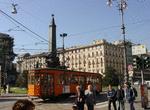 Image 9290 (204k, 1044x788) Photo by: David Pirmann Location: 5 Giornate | 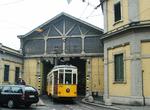 Image 30072 (154k, 720x519) Photo by: Peter Ehrlich Location: Deposito Baggio | 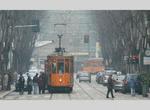 Image 30116 (136k, 720x401) Photo by: Peter Ehrlich Location: Via Procaccino/Via Della Francesca | 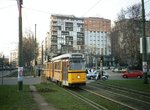 Image 72257 (175k, 1044x695) Photo by: Bernard Chatreau Location: Piazza della Repubblica | 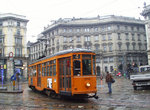 Image 111268 (230k, 930x676) Photo by: Peter Ehrlich Location: Cordusio |
Page Credits
By Peter Ehrlich.